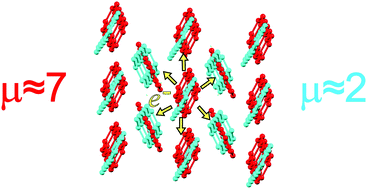Explaining different experimental hole mobilities: influence of polymorphism on dynamic disorder in pentacene†
Abstract
The effect of polymorphism (i.e. the ability of accessing different packing structures) on the fluctuations of transfer integrals is quantified for a prototypical molecule, pentacene. Computed mobilities for different polymorphs match the broad range of measured mobilities in organic field-effect transistors (OFET), suggesting that the large spread of experimental values reported in the literature, even when resorting to the same experimental setup, can be related to polymorphism in the samples. This finding is especially significant in new materials, where polymorphism is not known, as it could lead to a spread of results across groups and processing conditions, ultimately slowing down the research towards better semiconductors. Additionally, our analysis shows for the first time that the non-local electron–phonon coupling changes with temperature, a key finding that must be taken into account when computing the temperature dependence of the mobility; it also highlights the possibility of identifying previously unexplored ranges of temperatures, where materials display higher performances. The method here presented can be used to rapidly screen many materials and design new ones thanks to its low computational cost and its accuracy.

- This article is part of the themed collection: Journal of Materials Chemistry C Advisory Board Collection


 Please wait while we load your content...
Please wait while we load your content...